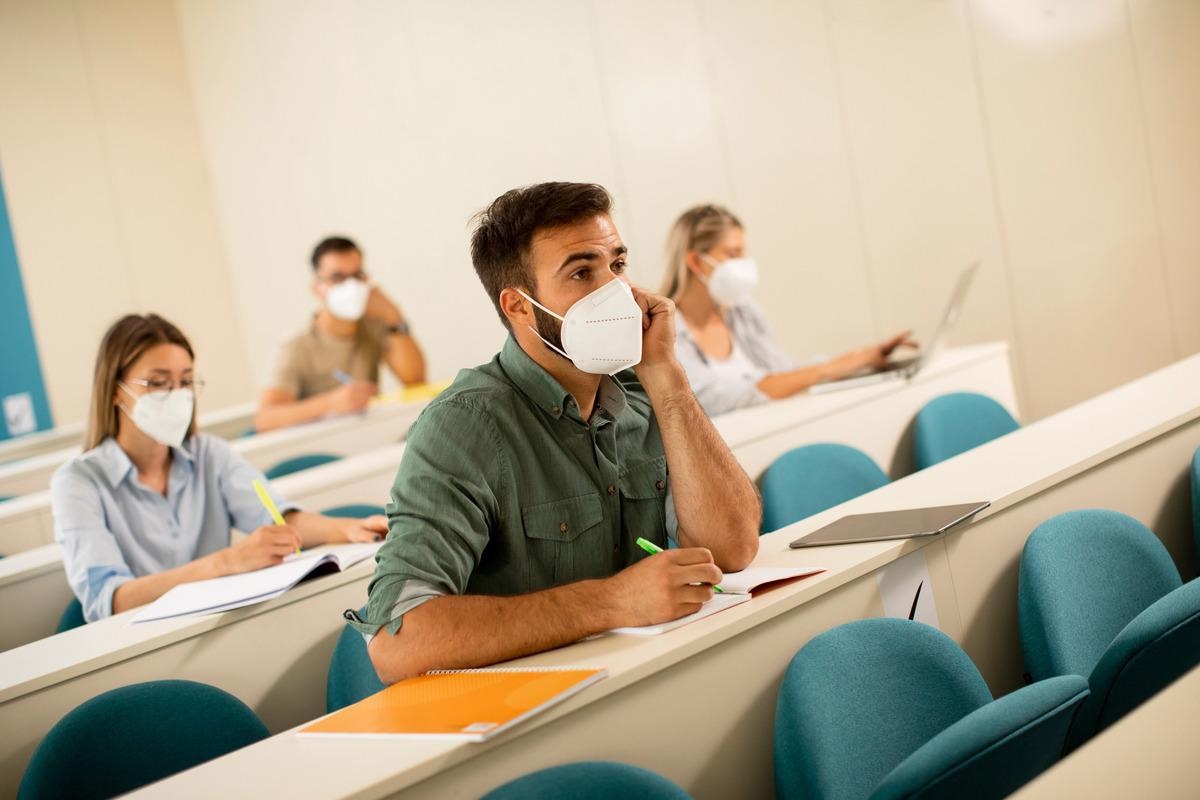In a recent study published in Emerging Infectious Diseases, researchers evaluated the increase in severe acute respiratory syndrome coronavirus 2 (SARS-CoV-2) infections among university students immediately after returning to their university in September 2020. The students relocated to their universities for the new academic term during the coronavirus disease 2019 (COVID-19) pandemic in England.
 Study: Effect of Returning University Students on COVID-19 Infections in England, 2020. Image Credit: BGStock72/Shutterstock
Study: Effect of Returning University Students on COVID-19 Infections in England, 2020. Image Credit: BGStock72/Shutterstock
Background
In the United Kingdom (UK), university students relocate to their universities in September at the commencement of the new academic term, which coincided with the surge in COVID-19 cases in the country during that period. While some United Kingdom (UK) universities preferred online teaching, some universities required students to be present in person. Unfortunately, immediately after the new academic term started, SARS-CoV-2 outbreaks occurred associated with the universities.
About the study
In the present study, researchers evaluated the increase in COVID-19 cases and outbreaks on the return of students to their universities for the new academic term beginning September 2020 during the SARS-CoV-2 pandemic.
SARS-CoV-2-positive students (student case patients) were identified based on contact tracing records and their university attendance. Student case patients residing in university student accommodations were identified by matching their residential addresses with national property databases. SARS-CoV-2-positive individuals were asked about their activities and events within a week before the onset of COVID-19 symptoms/ date of the test, which included data on their attendance in educational settings.
For identifying university attendees among case patients, those with SARS-CoV-2-positive reports were linked to the National Health Service (NHS) test and trace exposure data. Contact tracing and case patient data were linked by the SARS-CoV-2-positive specimen number, date of birth, and the NHS number.
The types of accommodation were identified by matching the case patient address with the Ordnance Survey Address Base Premium database, wherein each address is assigned a unique property reference number (UPRN) which enables mapping case patients to a particular area of residence. Age-specific case rates were compared between towns with universities to those without using the Office for National Statistics (ONS) 2019 midyear estimates. COVID-19 case rates among student case patients and the rest of the population were compared, and the geographic regions with the highest number of cases were determined.
Results
Between 1 September 2020 and 31 December 2020, 1,999,180 COVID-19 cases were reported in England, of which 53,430 (2.7%) were student case patients. After the new academic term began (in September), a rapid increase in student case patients from 0.7% to 7.8% from September to October. The increase in COVID-19 cases was initially driven by cases and SARS-CoV-2 outbreaks in university student accommodations, most pronounced in individuals aged 18 to 23 years (student population), and was two-fold higher in towns with universities.
In the student population, cases increased from 11 COVID-19 cases/100,000 individuals to 99 COVID-19 cases/100,000 individuals between 1 September 2020 and 1 October 2020. During the same period, the COVID-19 case rate among the remaining population of England increased from three to 13 COVID-19 cases/100,000 individuals. At the commencement of the academic term, 60% to 70% of student case patients lived in student accommodations, which dropped to 20% to 30% after mid-November.
The mean ages of student case patients and all case patients were 20 years and 37 years, respectively, and a higher proportion of females among student case patients (57% females vs. 53% males). Most student case patients were reported in Nottingham, Sheffield, Bristol, Manchester, Birmingham, and Leeds. Most student case patients residing in student accommodations were reported in Nottingham, Sheffield, York, Newcastle, and Coventry.
SARS-CoV-2 outbreaks in student accommodations continued for six days compared to two days for other accommodation settings. Outbreaks that involved students showed an upward trend, increasing from 0.7% to 7.3% in September 2020 but declining to 1% by December 2020. A significant reduction in COVID-19 cases was observed in November after the second period of national restrictions in university towns; however, the rates increased in December after the restrictions were lifted.
Conclusion
To summarize, the unprecedented increase in COVID-19 cases among university students after their term began, likely due to the physical and social interactions of students in enclosed spaces during the university fresher week, was reduced by enforcing national COVID-19 restrictions. The study highlights the need for stringent preventive measures to curtail SARS-CoV-2 transmission.